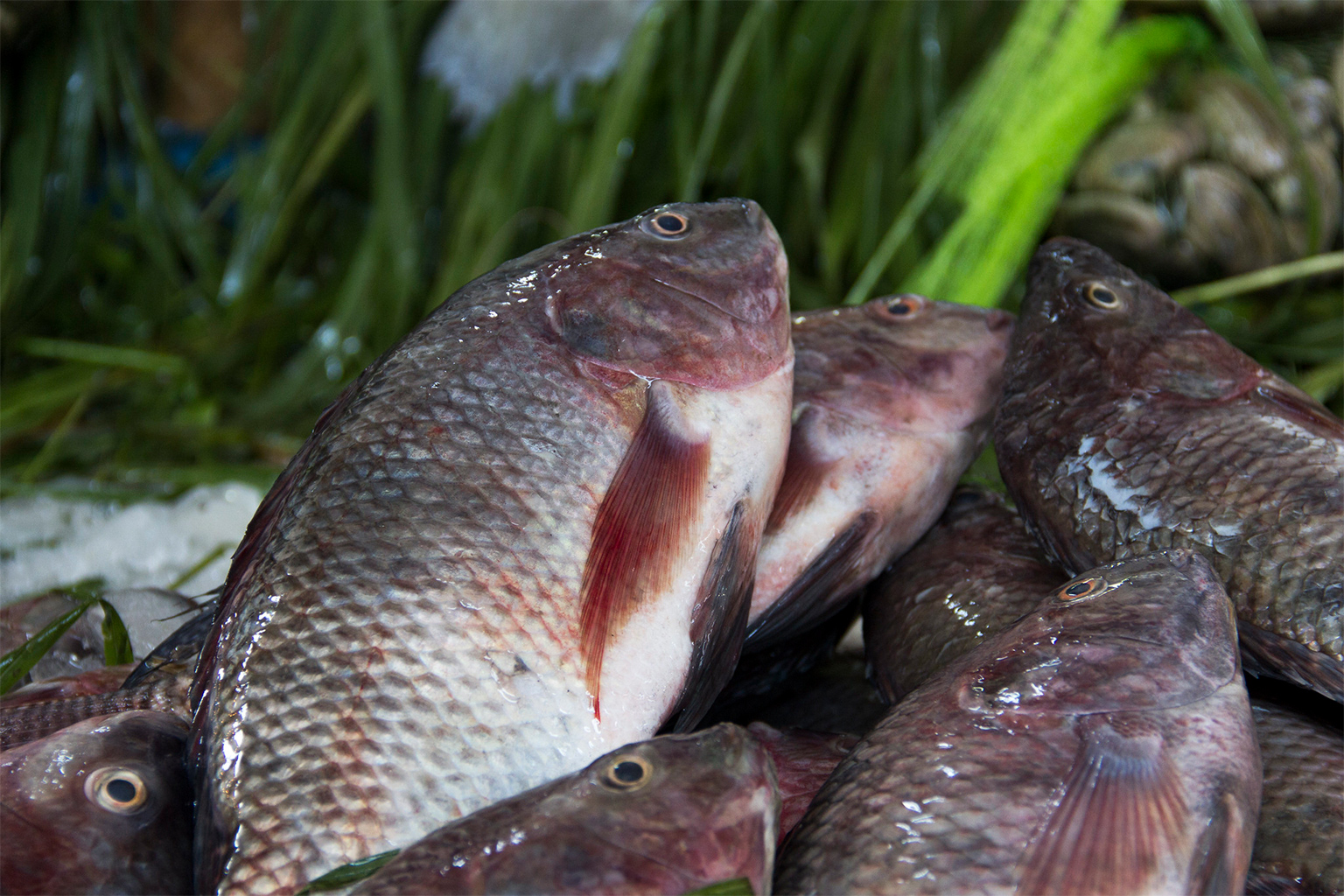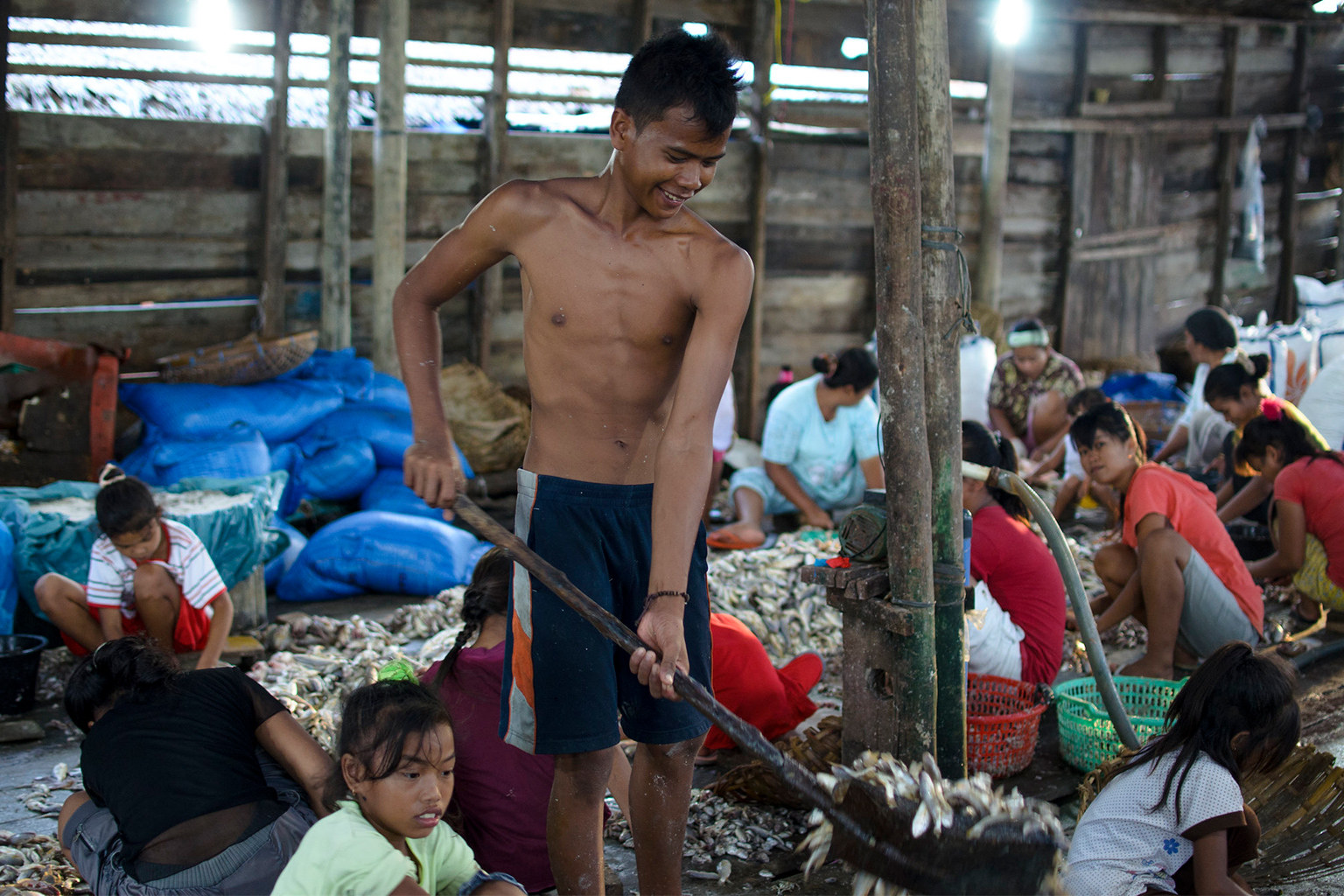- A recent investigative report claims to reveal for the first time the poor conditions, including mistreatment of fish, in some Indonesian fish farms.
- While activists and industry figures are at odds over the magnitude of the problem, both agree that aquaculture throughout Asia needs to be better managed while supporting small-scale farmers to address the issue of fish welfare.
- Production of farmed fish grew by 527% worldwide from 1990-2018; production of wild-caught fish during the same period rose by just 14%.
A new report alleges poor animal welfare conditions on fish farms in Indonesia, one of the world’s leading producers of fish products.
Produced by Act for Farmed Animals (AFFA), a coalition of animal rights groups, the report features undercover footage showing fish in unsanitary conditions, living in crammed and overstocked pens, and being skinned and filleted while still alive.
The coalition also found live fish left on ice while being transported to markets and grocery stores, which it says leaves them subject to thermal shock, a process that keeps fish conscious and stressed for prolonged periods.
“Whenever you have large numbers of animals that are farmed in intensive and industrial conditions, you can expect that their welfare will be highly compromised,” said Carolina Galvani, executive director of international animal protection organization Sinergia Animal, one of the groups that produced the report. The others were Indonesia-based Animal Friends Jogja and photojournalism agency We Animals Media.
“We have seen it with chickens, cattle and pigs, and now we also know that fish farming, harvest and slaughter can cause a lot of suffering,” Galvani said.

The report comes as the United Nations recently found that global aquaculture production rose by 527% between 1990 and 2018. By contrast, global capture fisheries, the catching of fish from the wild, rose just 14% during this same period.
The majority of the world’s aquaculture, which is the process of farming aquatic plants and animals, takes place in Asia, with the burgeoning Chinese market making up more than one-third of the global industry. In Indonesia, aquaculture now supplies almost 60% of the fish consumed across the archipelagic nation.
The fish species identified by the animal rights groups in their investigation include Nile tilapia (Oreochromis niloticus), catfish (Pangasius spp. and Clarias spp.) and milkfish (Chanos chanos), three of the world’s most popular types of farmed fish.
Galvani said the report “proves that large-scale fish farming can have a lot of bad environmental consequences.”
“When tons of fish are farmed together, they create a lot of waste, which can pollute lakes, dams and the ocean,” she told Mongabay. “Fish farms can also be breeding grounds for disease and significant amounts of antibiotics can be used to treat them.”
But some criticized the report, saying it wasn’t representative of aquaculture in the region.
Among them is Wing-Keong Ng, formerly a professor of aquaculture at various universities in Asia and now a consultant for aquafeed producers.
Ng says modern industrial-scale fish farmers are significant players in the aquaculture industry in Asia and export the product internationally. As such, the farming and harvesting of fish in these farms is required to meet various national and international certification schemes, which include fish welfare as part of the certification process.
“The science of fish welfare is evolving and as new information emerges, many of the fish farming husbandry techniques practiced by modern aquaculture farms here in Asia is evolving concomitantly,” he told Mongabay. “It is very unfortunate that the biased reporting of animal rights groups only present one side of the story to suit their agenda without considering the great strides in improvements pertaining to fish welfare in modern aquaculture practices.”

Ng said the Asian fish farming industry is dominated by small-scale farmers who reside in rural areas and who don’t have access to the latest information or technology advances in fish farming, including those dealing with fish welfare.
“These small to medium-scale fish farmers are more concerned about their livelihoods and providing food, security and education for their families and communities,” he said. “In my opinion, in any discourse about ‘mistreatment’ of farmed fish in Asia, the welfare of these groups of resource-poor farmers should always be taken into consideration.”
As demand for seafood grows, aquaculture production is expected to keep increasing. Indonesian President Joko Widodo has previously demanded the national fishery sector focus more on fish farming while moving to put restrictions on fishing trawlers, in doing so suggesting that aquaculture is better for the environment than capture fisheries as it doesn’t disturb an established ecosystem.
Galvani and AFFA dispute this, saying that wild ecosystems are disturbed regardless, as much of the fishmeal used to feed farmed fish is produced from fish caught at sea. Galvani said AFFA’s investigators observed this processed fishmeal being fed to all fish, even to herbivorous species such as tilapia.
“According to the United Nations Food and Agriculture Organization, the use of this type of feed in aquaculture contributes to overfishing and represents a significant threat to ocean biodiversity,” she said.
Ng confirmed that the marine-based ingredients used in fish feed are often sourced from pelagic fish, such as sardines (Clupeidae spp.) and anchovies (Engraulidae spp.), that are processed into powder for fishmeal and oil for the production of fish oil.
However, Ng said the industry may be changing due to environmental concerns about the depletion of pelagic fish in the oceans and the reliance of poorer communities in Asia who rely on the species as an affordable source of food. He said there are now alternatives to fishmeal and fish oil that are commercially available, including plant-based proteins, insect meals and algal meals and oils, which are particularly appropriate for herbivorous and omnivorous farmed fish species.

“Our oceans, lakes and rivers are no longer able to supply the wild-caught seafood required [for sustenance] and many of these capture fisheries have either collapsed, stagnated or heavily managed by fishing quotas to maintain sustainability,” Ng said. “Thus, aquaculture is the only way to meet current and future seafood demand, so in that sense, fish farming ‘protects’ even more wild fish from being unsustainably captured and disrupting the aquatic ecosystem.”
Galvani said AFFA intends to work with Indonesian fish farmers to improve the conditions filmed in the report by identifying steps to achieve more humane and sustainable aquaculture management. These include space requirements and stocking density, water quality monitoring, and effective and humane stunning and slaughter techniques.
Ultimately, Galvani said, “as consumers, the most important step we can take is to reduce or eliminate our consumption of animal products, fish included, if we want to protect our planet.”
Asia is still addressing elements of the wider aquaculture sector, Ng said, with many nations still working to come to terms the issue of fish welfare. “Some countries do have animal welfare and animal cruelty laws even though the coverage for farmed fish may be limited or non-existent,” he said. “Even when these national laws are in existence, the enforcement of these laws can be difficult in Asia. [It is] is a very large and diverse continent.”
While AFFA’s report and others by activist groups detail negative elements of the aquaculture industry, Ng said such exposés have “forced” the global aquaculture industry to counter any “false narratives” and so create better environmental outcomes and more humane treatment of farmed aquatic animals, which he said is a positive outcome for the industry as a whole.
“In my opinion, despite the biased reporting, myths, half-truths and sometimes outright misinformation perpetuated by some environmental, food safety and animal rights groups concerning the aquaculture industry, they do play a ‘check and balance’ role to rein in some of the excesses of the aquaculture industry,” Ng said.
Banner image: A fish market in South Sulawesi, Indonesia. Image by Asian Development Bank via Flickr (CC BY-NC-ND 2.0).
See related reporting: Indonesia plans to have a network of 136 villages dedicated to aquaculture by the end of this year:
Indonesia aims for sustainable fish farming with ‘aquaculture villages’
